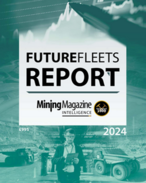The project cannot proceed until the NSW Aboriginal Land Council gives its consent for a rail spur to cross Darkinjung land.
The rail line would be needed to transport 5 million tonnes per annum of coal for a minimum of 28 years.
The court ruled any determination would be invalid without the consent of the NSW Aboriginal Land Council.
“The need for consent of the state land council is, to my mind, a core aspect of the approval process of any development, including state significant development,” Justice Malcolm Craig said.
The company must now renegotiate with the land council for access.
Previously the council asked for $300 million, a claim that was “pure extortion” according to the company.
A company spokesman said the decision did not affect the planning assessment process for the project, which was being conducted by the NSW Department of Planning and Environment.
The Kores proposal seeks approval to construct and operate an underground coal mine and associated facilities to extract up to 5Mtpa of export quality thermal coal using longwall mining methods at depths between 350m and 690m.
Although the project application was lodged in October 2012, there is a long history to the proposal dating back to 2006.
The earlier proposal was considered in multiple reviews, including a specific review by the Planning Assessment Commission in 2010.
That review recommended approval of the project but subject to more than 40 recommendations.
A former planning minister refused the application in March 2011 immediately prior to the NSW election.
The current application differs from the previous application in a number of respects, with the main one being removal of the 11 western longwalls that were in steeper terrain under Jilliby State Conservation Area.
In February 2014 the then planning and infrastructure minister requested that the Planning Assessment Commission review the project and conduct public hearings.
The minister’s terms of reference required the commission to consider a range of documents and other information, hold public hearings, assess the merits of the project as a whole and recommend any further measures required to avoid, mitigate or manage the potential impacts of the project.
























